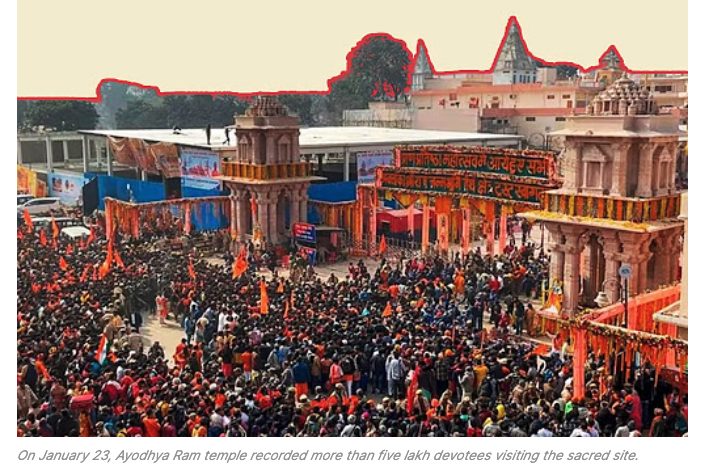INDIA, January 23, 2024 (Swarajya): Just a day after the inauguration of the Ram Mandir at Ayodhya, more than 500,000 devotees thronged the temple premises, hoping to have a glimpse of Ramlalla. The following day, the Chief Minister of Uttar Pradesh Yogi Adityanath expressed his desire to implement comprehensive crowd management methods at the temple. On the third day, the crowd was relatively better managed, if reports are to be believed. Anyone who has stood in long queues for hours together will probably find it exhausting and slightly intimidating to visit centers of religious importance after looking at the images of thousands of devotees rushing into a temple. However, many temples in India have integrated the provision of enriching and aesthetically wholesome experiences for devotees into their crowd management strategies.
The Tirupati Tirumala Sri Venkateshwara Temple is known not only for being the richest temple in India but arguably one of the safest — it has had no major stampede in over three decades. On a normal day, the temple registers the presence of over 75,000 devotees. During Brahmotsavams, the crowd can go up to 400,000 or more. In Tirupati, there are two queue complexes — Vaikuntam I and II — with 60 plus compartments for pilgrims to wait in queue for a darshan that may take more than a day-and-a-half. Each compartment, equipped with toilet and bathing facilities, can lodge up to 300-500 people. Display boards show the darshan timing and provide timely announcements to the pilgrims with updates. Special darshan tokens are sold online, and in advance, to ease the pressure on pilgrims. Kishore Biyani, the founder of Future Group mentions in a podcast that he understood how to effectively manage crowds from the Tirupati temple. That said, it can also be argued that the Tirupati system is not the ideal one for the devotee.
More of the pros and cons of temple crowd management solutions at source.
https://swarajyamag.com/culture/long-queue-in-temples-can-be-exhausting-only-if
A daily summary of world news for Hindus and non-Hindus alike

